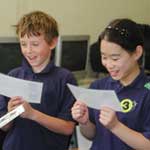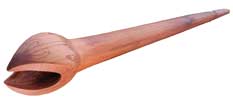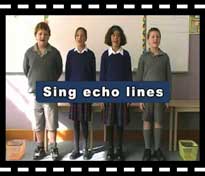| ACKNOWLEDGEMENTS |
 |
The Project
directors acknowledge the vital support and contributions of many people
to this report, including:
• the very dedicated staff of the Educational Assessment Research Unit
• Heleen Visser, Hadyn Green and other staff members of the Ministry of Education
• members of the Project’s National Advisory Committee
• members of the Project’s Music Advisory Panel
• principals and children of the schools where tasks were trialled
• principals, staff and Board of Trustee members of the 246 schools included in the 2008 sample
• the 2867 children who participated in the assessments and their parents
• the 96 teachers who administered the assessments to the children
• the 43 senior tertiary students who assisted with the marking process
• the 192 teachers who assisted with the marking of tasks early in 2009.
• the people and organisations who granted permission for the publication of their work in this report,
to illustrate our assessment resources. [see Resource Acknowledgments for full details and rights]
OVERVIEW
 |
On average, year 8 students performed modestly better than year 4 students on tasks that involved creating, playing or singing music, but substantially better on tasks involving interpreting, analysing, appreciating or moving to music. The largest differences tended to occur on tasks that required interpretation of standard musical notation or knowledge of particular styles of music, and the smallest differences on singing tasks. In some cases, year 4 students performed better in displaying vitality and colour in performance.
Overall, performance in music did not improve or decline meaningfully between 2004 and 2008. The evidence from the four assessments of music over the past 12 years suggests a small improvement in performance over these 12 years for year 4 students and little or no change for year 8 students.
The relative popularity of music compared to other school subjects has not changed over the past 12 years, and participation levels in music lessons or groups outside of school have been maintained or slightly increased. Involvement in music activities beyond school is particularly high for year 4 Pasifika students. Girls were clearly more positive about musical activities than boys, and Pasifika students than Pakeha students. Listening to music (for year 4 students) and moving or dancing to music (for both year levels) have become more common in school music programmes.
Differences in music performance among demographic subgroups were substantially lower than in most other subject areas. At both year levels, girls typically performed a little better than boys, Pakeha students moderately better than Mäori students, and Pakeha students slightly better than Pasifika students, but in all of these comparisons there was a huge overlap in performance, with an opposite trend on one task. |
| The NEMP Approach to National Monitoring |
 |
New Zealand’s National Education Monitoring Project commenced in 1993, with the task of assessing and reporting on the achievement of New Zealand primary school children in all areas of the school curriculum.
Children are assessed at two class levels: year 4 (halfway through primary education) and year 8 (at the end of primary education). Different curriculum areas and skills are assessed each year, over a four-year cycle. The main goal of national monitoring is to provide detailed information about what children know, think and can do, so that patterns of performance can be recognised, successes celebrated, and desirable changes to educational practices and resources identified and implemented.
Each year, small random samples of children are selected nationally, then assessed in their own schools by teachers specially seconded and trained for this work. Task instructions are given orally by teachers, through video presentations, on laptop computers, or in writing. Many of the assessment tasks involve the children in the use of equipment and supplies. Their responses are presented orally, by demonstration, in writing, in computer files, or through submission of other physical products. Many of the responses are recorded on videotape for subsequent analysis.
The use of many tasks with both year 4 and year 8 students allows comparisons of the performance of year 4 and 8 students in 2008. Because about 45% of the tasks have been used twice, in 2004 and again in 2008, trends in performance across the four year period can also be analysed. Two tasks used in 1996 and again in 2008 allowed comparisons over this 12-year period.
| Assessing Music |
 |
In 2008, the second year of the fourth cycle of national monitoring, three areas were assessed: music, aspects of technology, and reading and speaking. This report presents details and results of the assessments of music.
A framework for music education and its assessment is presented in Chapter 2. It highlights two major content areas of learning in music: knowing and making music (which includes creating, playing and singing music), and knowing and responding to music (which includes interpreting music, moving in response to music, and analysing and appreciating music). It also identifies a range of musical skills to be developed and important aspects of student motivation and involvement with music. |
|
| Knowing and Making: Creating, Playing, Singing |
 |
Chapter 3 examines achievement involving knowing and making music. Averaged across 77 task components used with both year 4 and year 8 students, 8% more year 8 than year 4 students or teams produced correct responses. This indicates that, on average, students have made useful but modest progress between year 4 and year 8 in the skills assessed by the tasks.
|
|
Year 8 students tended to be markedly stronger than year 4 students in tasks or aspects of tasks involving imitating patterns by clapping or playing instruments, reading music notation and playing instruments as part of creative compositions, but performed similarly to year 4 students in tasks involving singing, and were less inclined to display vitality and colour in their performances.
The long-term trend task, Vocal Sizzle, allowed us to compare the singing performance of students in the 1996 and 2008 assessments. Averaged across the 12 components of that task, on average, 2% more year 4 students succeeded in 2008 than in 1996, while there was no change in the performance of year 8 students over the same 12-year period.
Eight trend tasks were administered to students in both the 2004 and 2008 assessments. Averaged across the 32 components of those tasks, on average, 1% more year 4 students succeeded in 2008 than in 2004. There was also a 1% gain found for year 8 students.
|
Knowing and Responding: Interpreting, Moving, Analysing, Appreciating |
 |
Chapter 4 examines achievement in knowing and responding to music. Averaged across 110 task components used with both year 4 and year 8 students, 16% more year 8 than year 4 students or teams produced correct responses. This indicates that, on average, students have made substantial progress between year 4 and year 8 in the knowledge and skills assessed by the tasks. Year 8 students tended to be markedly stronger than year 4 students in tasks or aspects of tasks involving interpreting standard musical notation or requiring knowledge of particular styles of music (especially styles associated with a range of countries).
|
|
The long-term trend task, Melodic Direction, which asked students to match music notation to musical passages they listened to, allowed us to compare the performance of students in the 1996 and 2008 assessments. Averaged across the six components of that task, on average, 3% more year 4 students succeeded in 2008 than in 1996 but 4% fewer year 8 students succeeded in 2008 than in 1996.
Seven trend tasks were administered to students in both the 2004 and 2008 assessments. Averaged across the 46 components of those tasks, on average, 1% fewer year 4 students succeeded in 2008 than in 2004. A similar 1% to 2% decline was found for year 8 students. |
| Music Survey |
 |
Chapter 5 presents the results of the music surveys, which sought information from students about their involvement in and enjoyment of music curriculum experiences at school. Students were also asked about their involvement in and enjoyment of music-related activities out of school time.
Year 4 students generally were very positive about doing music at school. More than 60% chose the highest rating to describe how much they liked doing music at school and warmly anticipated further study of music at school, moderate increases from the 1996 results. There appears to have been an increase in some music activities in school since 1996, particularly in regard to playing instruments, listening to music and dancing or moving to music. There continues to be a particularly large gap between the enjoyment of playing instruments and the extent to which this activity is included in school music programmes. Outside of school, the most common activity is listening to music, which is also rated the most enjoyed activity. Twenty-nine percent said they learned music or belonged to a music group outside of school, 4% more than in 1996.
Compared to year 4 students, year 8 students were less inclined to use the most positive categories. This pattern has been common in national monitoring surveys. Year 8 students were quite positive about doing music at school and continuing to learn or do music, with percentages little changed from 1996. In school music programmes, there appear to have been small increases in listening to music and dancing or moving to music. Enjoyment of the activities has been maintained or slightly increased across the last 12 years, except for a small decline in enjoyment of singing. Opportunities to make up (compose) music seem to be very infrequent. Outside of school, by far the most common activity is listening to music, which is also very strongly rated the most enjoyed activity. Thirty percent said they learned music or belonged to a music group outside of school, unchanged from 1996.
|
| Performance of Subgroups |
 |
Chapter 6 reports the results of analyses that compared the task performance and survey responses of different demographic subgroups.
School type (full primary, intermediate or year 7–13 high school), school size, community size and geographic zone did not seem to be important factors predicting achievement on the music tasks. The same was true for the 2004, 2000 and 1996 assessments. However, there were statistically significant differences in the performance of students from low, medium and high decile schools on 39% of the tasks at year 4 level (compared to 36% in 2004, 57% in 2000 and 35% in 1996) and on 27% of the tasks at year 8 level (compared to 45% in 2004, 27% in 2000 and 45% in 1996). Much higher percentages are observed in most other curriculum areas we assess.
For the comparisons of boys with girls, Pakeha with Mäori, Pakeha with Pasifika students, and students for whom the predominant language at home was English with those for whom it was not, effect sizes were used. Effect size is the difference in mean (average) performance of the two groups, divided by the pooled standard deviation of the scores on the particular task. For this summary, these effect sizes were averaged across all tasks.
Girls averaged slightly higher than boys, with mean effect sizes of 0.11 for year 4 students (compared with 0.08 in 2004 and 0.15 in 2000) and 0.11 for year 8 students (compared with 0.19 in 2004 and 0.10 in 2000). As was also true in 2000 and 2004, the music survey results at both year levels showed that girls were substantially more positive than boys about music activities (notably singing and dancing/moving to music) and more involved in these in their own time.
Pakeha students averaged slightly higher than Mäori students, with mean effect sizes of 0.16 for year 4 students (compared with 0.14 in 2004 and 0.20 in 2000) and 0.18 for year 8 students (compared with 0.16 in 2004 and 0.17 in 2000). Attitudes to music and reported involvement in musical activities were similar for Pakeha and Mäori students.
Pakeha students averaged slightly higher than Pasifika students, with mean effect sizes of 0.07 for year 4 students (compared with 0.02 in 2004 and 0.18 in 2000) and 0.17 for year 8 students (compared with 0.07 in 2004 and 0.24 in 2000). The year 4 survey results showed that Pasifika students were more involved in and enthusiastic about some aspects of music, with 50% of Pasifika and 29% of Pakeha students reporting that they were learning music or involved in a music group outside of school. The year 8 survey results also suggested that Pasifika students were more involved in and enthusiastic about music, yet in this case there was no difference in the percentages reporting that they were learning music or involved in a music group outside of school (32% of both Pakeha and Pasifika students).
Compared to students for whom the predominant language at home was English, students from homes where other languages predominated averaged very slightly lower, with mean effect sizes of 0.03 for year 4 students and 0.08 for year 8 students (in 2004 there were very small differences in the opposite direction, with effect sizes of 0.01 for year 4 students and 0.02 for year 8 students). Comparative figures are not available for the assessments in 2000.
|
| Overall Trends in Music Results |
 |
Considering all of the music trend tasks used both in 2004 and 2008, it is appropriate to conclude that over the four-year period, average performance did not improve or decline for either year 4 or year 8 students. Averaged across the 78 trend task components from the 2004 and 2008 assessments, there was no change for year 4 students and a decline of less than 1% for year 8 students.
For year 4 students, this no-change result follows average gains of 1% between 1996 and 2000 and 2% between 2000 and 2004, suggesting overall a small improvement between 1996 and 2008. For year 8 students, the very small decline over the last four years follows a small gain of 3% between 1996 and 2000, and no change between 2000 and 2004, suggesting overall little change between 1996 and 2008.
Given that only two tasks looked directly at the trends between 1996 and 2008, the results for these tasks should not be treated as equivalent in importance to the analysis in the last paragraph. Averaged across the 18 components of the two tasks, there was a 2% increase from 1996 to 2008 for year 4 students and a 1% to 2% decline for year 8 students.
These results are reasonably consistent with the accumulated results from four-year trends.
|
|



